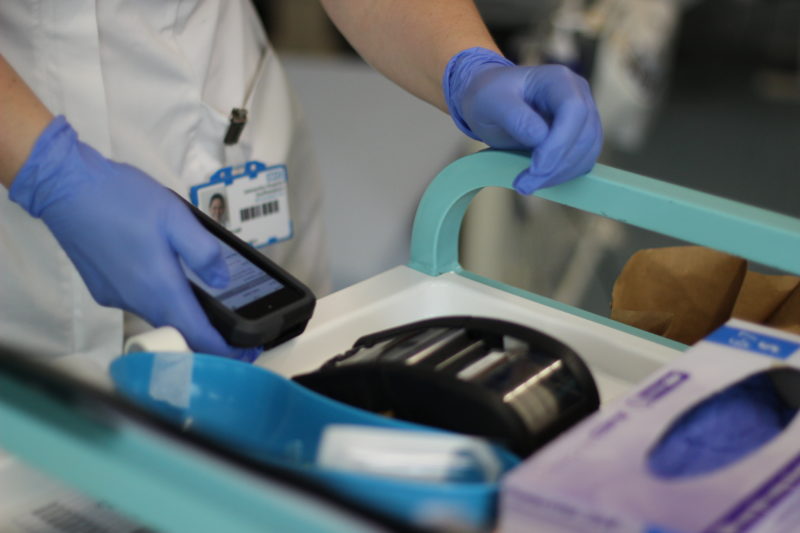 How do we take blood tests?
How do we take blood tests?
University Hospital Southampton (UHS) is one of the largest major trauma centres in the UK and very year the Trust takes over 1.2 million blood tests. UHS use Sample 360, an electronic, digital blood sample system used on an iPod.
Sample 360
The clinical team often needs to test a patient’s blood as part of their care whilst in Hospital.
When the phlebotomist (a person who is trained to take blood) has a request to take a patient’s blood, they must first make sure they are taking blood from the correct patient. The phlebotomist uses the Sample 360, which is on a handheld device, to scan the barcode on the patient’s wrist band. This is to positively identify the patient.
Once the phlebotomist knows they have the correct patient, they can safely take the blood sample needed for the blood tests.
Next the phlebotomist then uses the iPod, which is connected to mini printer, to print a label with the patient’s details. They sticks this label onto the blood sample and put it into a bag ready for the laboratory. This means test can be traced from the patient on the ward, to the laboratory, where staff carry out the tests. The results can then be shared back to the clinical team from the laboratory directly to the digital patient record.
The problems of a paper process
Before the Trust started to use Sample 360, blood tests were processed by paper. The blood test would be taken without positively identifying the patient which in itself is problematic. The paper process can be prone to human error, as some blood tests could be taken from the wrong patient, by mistake. This would therefore lead to delays in patient care, because of the blood taken from the wrong patient. Therefore the wrong information would go back to the clinical team. Also, because of the large number of blood tests taken some of the samples could be lost. Another issue was a lack of clear communication between the clinical team, the phlebotomist and the lab team.
The benefits of a digital system
Sample 360 was developed by doctors, nurses, phlebotomists, laboratory and informatics staff. It has improved patient safety.
You can find out more about Sample 360 here.
Patients are no longer bled unnecessarily, or receive the wrong set of results, due to mis-identification. Staff can deliver care on the wards using mobile devices.
"Using Sample 360 we can trace the blood much more easily than before; we know when the blood has been processed and when the results are ready." Karen Wright, Nurse Practitioner
